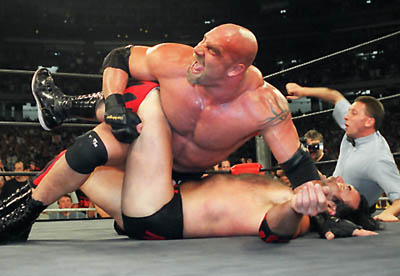 Hanging, Beheading, Dichotomy, and Worse: The Most Macabre Brainstorming Session Ever
Hanging, Beheading, Dichotomy, and Worse: The Most Macabre Brainstorming Session Ever The grainy Internet video of Saddam Hussein’s execution shows the grim brutality of state sanctioned death sentences. Saddam looked dazed as he walked up the stairs to the scaffold. It’s hard to imagine what was going through his mind. Anger? Possibly. Remorse? Unlikely. Fear? Certainly. Perhaps he was simply anticipating the physical sensation of the ground giving way under his boots, the short drop, his neck snapping, and his feet dancing on air before blackness permanently descended over his unhooded eyes.
Is hanging a bad way to go? In the late 19th Century, after a number of botched executions by hanging that resulted in slow strangulation and/or decapitation, the State of New York decided to study this question, seeking to understand the biology and physiology of death by hanging and to determine whether a more humane method of capital punishment could be found.
New York’s governor appointed a committee of experts to evaluate alternatives to hanging for convicted and condemned capital murderers. This committee became known as the “Gerry Commission,” after its chairman, Elbridge Gerry. Elbridge Gerry of New York was the grandson of Elbridge Gerry of Massachusetts, signer of the Declaration of Independence and fifth vice president of the United States. The senior Gerry is most famous for once comparing the Continental Army to his penis.
Under Chairman Gerry’s watch, nearly three dozen deadly ideas were brainstormed and evaluated in the Commission’s report to the governor.
In all likelihood, the 1888 Gerry Report is the most bizarre and grotesque report ever produced by a committee of government bureaucrats in the US, Iraq, or anywhere else. For weeks, these plucky public servants brainstormed, researched and categorized all the ways of killing people they could think of. Then, they comprehensively, deliberately, and dispassionately examined the merits of each in alphabetical order.
In discharging their obligation, they duly considered and evaluated an astonishing number of methods for carrying out the sentence of death. In the end, they came up with a list. I’ve got the report and read it. Here are some of the methods of dispatch they evaluated:
Beating to death with clubs
Beheading
Blowing from a cannon (The commission became interested in this method of execution based on reports from Indian Sepoy army in the 19th Century. The commission notes two ways for carrying out this sentence. First, “the condemned is lashed to the cannon’s mouth. Within two seconds of pulling the trigger, he is blown to 10,000 atoms.” Alternatively, “the living body of the offender is thrust into the cannon, forming, as one might say, part of the charge.”)
Boiling (“usually in hot water but sometimes in melted sulfur, lead or the like”)
Burying alive
Crucifixion
Dichotomy (cutting a person in half)
Dismemberment (like dichotomy but even messier)
Drowning
Exposure to wild beasts (In due diligence, the commission briefly considered the method of execution served on female criminals in Tonquin, (present day Vietnam). The commission noted the condemned were “tied to a stake and in that situation delivered to an elephant who seizes them with his trunk, throws them into the air, catches them on his tusks, and finishes them off by trampling.”)
Lapidation (to cause death by throwing stones)
Peine forte et dure (pressing with heavy weights to stop breathing)
Pounding in a mortar. (In Proverbs 27:22, the Bible reads, “Though thou shouldest bray a fool in a mortar among wheat with a pestle, yet will not his foolishness depart from him.” This biblical passage prompted a religious Gerry commission member to consider “pounding in mortar” as a possible method of serving the death sentence. Presumably, this procedure would involve the condemned being placed in a large mortar or similar vessel and then pounded with an enormous pestle. This is much the preparation of a mint julep, except a condemned prisoner is substituted for mint leaves.)
Precipitation (throwing from a cliff)
Running the gauntlet
Garroting
Stabbing
Strangling
Use a little imagination, and you can envision the tenor of the debates swirling around the conference table of the Gerry Commission. On one side of the table might have been the dismemberment and stomping elephant advocates, sniping derisively at the beheading and garrote crowd about their relative daintiness, while the ‘blowing from a cannon’ promoters crowed about the sure-fire nature of their choice, as well as the state’s ability to raise funds by charging admission.
While some of these methods (e.g. boiling, crucifixion, and throwing from a cliff) may have possessed an impressive deterrent effect, few of them fit the commission’s objectives of speediness, humaneness, and efficiency in execution.
Brainstorming session over, the work of winnowing out the cruel, the unworkable, and the just plain weird began. In the end, no ideas remained –- all were considered either too cruel or weird.
“Your Commission have examined with care the accounts which exist of the various curious modes of capital punishment. . . that have been used. The result (is that none of these) can be considered as embodying suggestions of improvement over that now in use in this State.”
The felons on New York’s death row may have sighed in relief, knowing that the whole mortar and pestle thing was off the table.
Saddam never realized what a lucky guy he was.
# # #

























